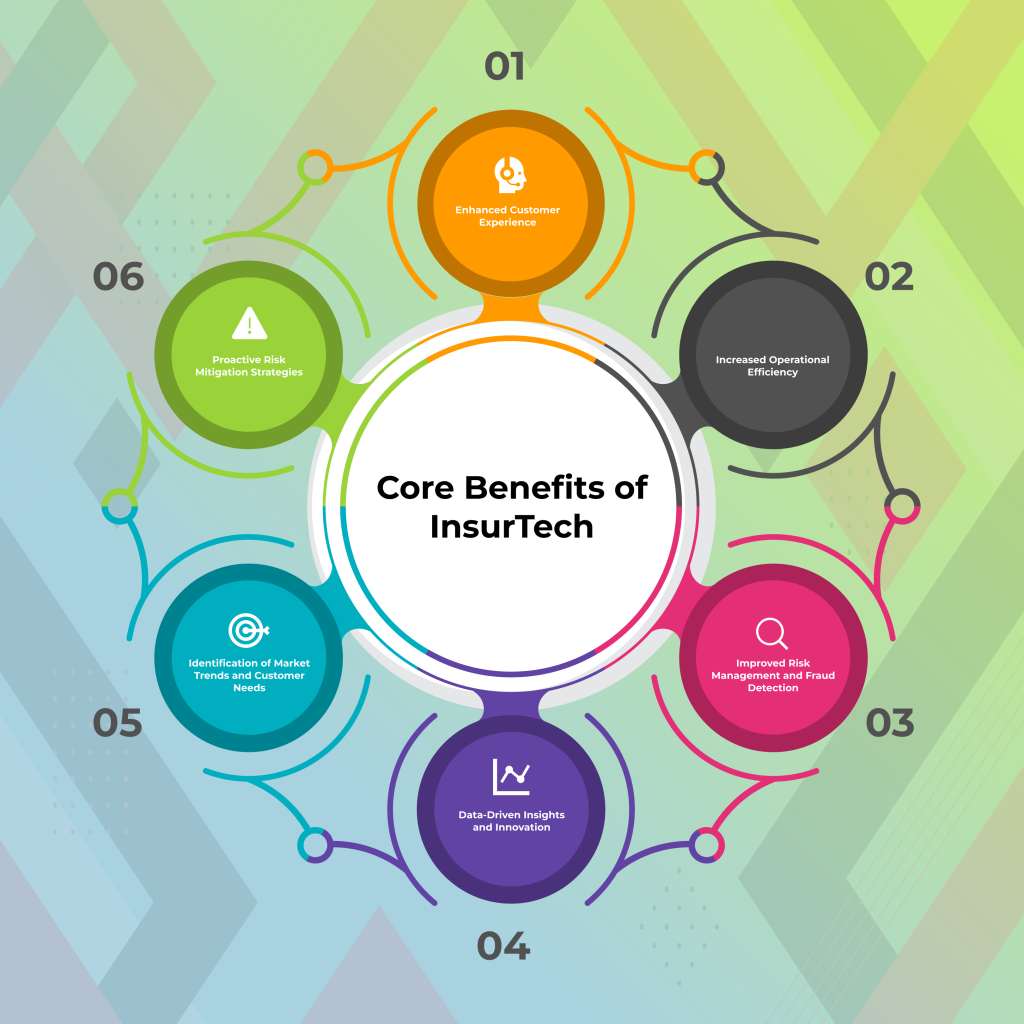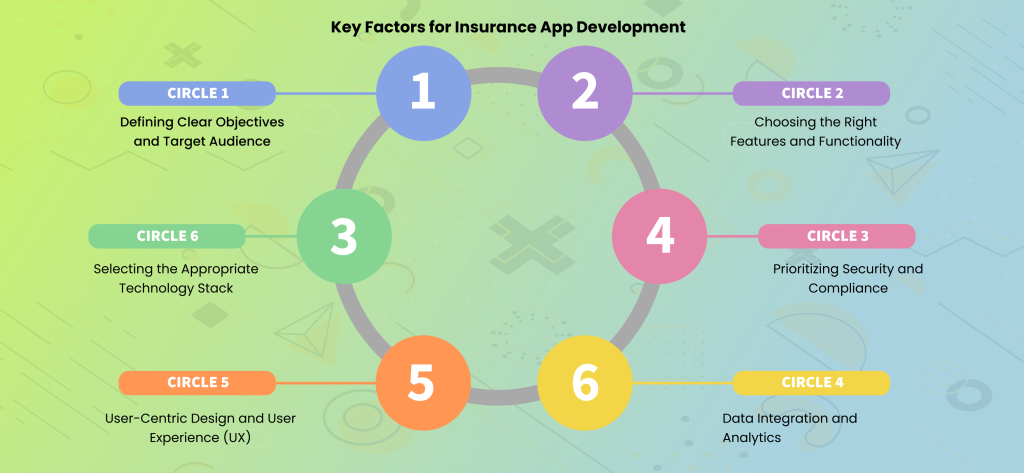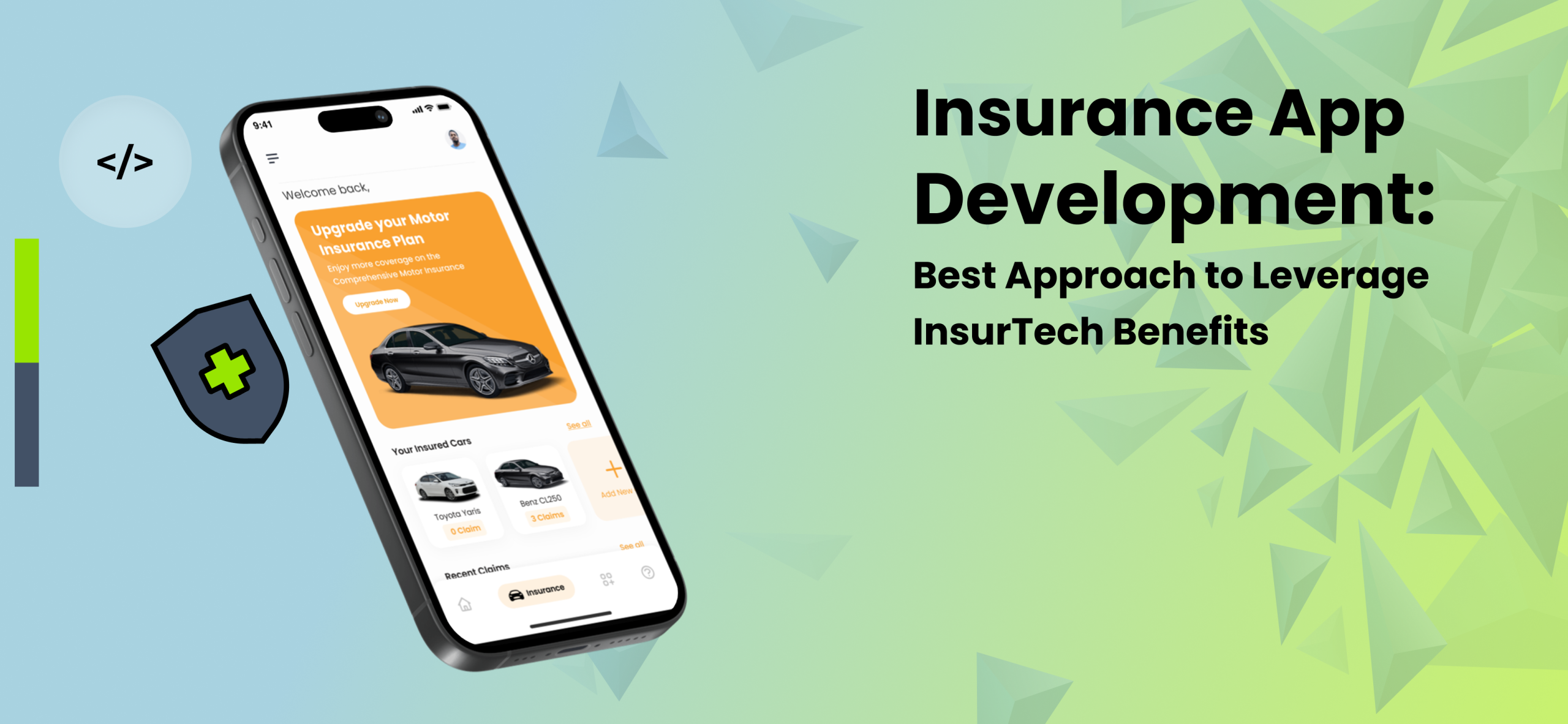The insurance industry is evolving rapidly with multiple touchpoints connecting insurance companies to their customers. Thanks to the latest technological advancements, the sector has embraced Insurance App Development and InsurTech Solutions to bring essential services right to users’ fingertips through various insurance mobile apps. Today, both pre-existing companies and startups are actively investing in insurance mobile app development, responding to the growing demand for digital convenience in insurance products such as car insurance apps, health insurance apps, life insurance apps, property insurance apps, and travel insurance apps.
Modern customers now expect seamless access to coverage details, the ability to file claims instantly, and reliable customer support—all available through intuitive insurance applications. For insurance agents and customers alike, these mobile insurance apps enhance user engagement, improve the claims process, and increase customer satisfaction by providing real-time interaction without the need for intermediaries.
Developing an insurance app requires careful consideration of key insurance app features, such as secure payment gateways for car insurance, smooth navigation on App Stores, and integration with backend systems to manage different types of insurance apps. Staying updated with the latest InsurTech trends ensures that your insurance app remains competitive, scalable, and user-friendly.
In this competitive landscape, a well-built insurance mobile app is no longer optional—it is a necessity for any insurance company aiming to improve operational efficiency and customer experience. By leveraging mobile technologies, insurers can reduce dependence on middlemen, streamline the claims process, and directly connect with their end users, ultimately driving growth and profitability.
Whether you’re targeting root insurance models or specialized sectors, investing in mobile app development for insurance is the key to unlocking new business opportunities and meeting the modern demands of insurance customers.
Artificial intelligence continues to reshape the insurance industry, driving unprecedented digital transformation in insurance and accelerating the rise of insurtech companies. As digitalisation in insurance takes hold, a recent survey by Digital Insurance reveals that 78% of insurance carriers, agencies, and tech firms plan to increase their technology budgets in 2025. Among the top priorities are insurance analytics software, AI-driven solutions, and insurance technology solutions, with insurance AI chatbots and conversational AI in insurance playing a pivotal role in enhancing customer engagement. Tools like conversational insurance platforms and insurance mobile apps, including specialized offerings like car insurance mobile apps, are enabling a more seamless digital journey in insurance.
The integration of chatbots in insurance and advanced IT solutions for the insurance industry is no longer speculative; some firms, especially in the health sector, are already using AI tools in full production. Products such as medical insurance software solutions and surgery insurance platforms are evolving rapidly. Furthermore, the insurance and tech landscape is expanding with innovations like one day insurance, domestic travel insurance, and annual travel insurance policies delivered through digital platforms.
As the car insurance market evolves, regional markets like car insurance in Columbus reflect broader shifts driven by insurance software development and insurance rating software. Professionals with credentials like the AIDA designation are increasingly valued for their ability to navigate this changing terrain. Ultimately, insurtech solutions and the best insurance software are powering the next wave of insurance industry transformation, making insurance and digital inseparable in the modern era.
Imagine living in a world where filing an insurance claim takes mere minutes, policy adjustments occur instantly, and personalized coverage meets your real-time needs seamlessly – the rapid digital transformation in insurance is already creating this reality. Did you know global InsurTech investments hit $13.5 billion last year alone, signaling an astounding shift in how insurance is conducted globally? This increase underscores technology’s undeniable effect on an industry traditionally associated with manual processes and lengthy procedures – at its heart lies digital transformation for insurance.
At its heart, InsurTech (an amalgamation of “insurance” and “technology”) is disrupting traditional insurance models through cutting-edge technologies like AI, big data analytics, and mobile apps. InsurTech solutions aim to streamline operations while improving customer experiences and creating innovative insurance products; its growth has driven increased demand for robust Insurance app development
– serving as one of its cornerstones of transformation.
This blog seeks to walk you through the fundamentals of building insurance applications that effectively exploit InsurTech benefits. We will explore key features, best practices, and strategic approaches necessary for designing apps that meet and exceed customer expectations and touch upon InsurTech’s future prospects.
Top Benefits of Using InsurTech in Insurance Apps

Enhanced Customer Experience
One of the most transformative forces in today’s market is InsurTech insurance, which is reshaping the insurance and technology landscape by enhancing customer experiences through cutting-edge InsurTech solutions. Leading this evolution are insurance mobile apps, including specialized platforms like car insurance apps, health insurance apps, life insurance apps, property insurance apps, and travel insurance apps. These apps simplify essential tasks such as managing coverage details, streamlining the claims process, and enabling users to file claims instantly, all while providing real-time updates through secure payment gateways.
Key insurance app features such as conversational AI chatbots and insurance applications powered by conversational AI provide seamless, 24/7 customer support, offering a more personalized and efficient digital insurance journey. Whether it’s developing an insurance app focused on root insurance or creating innovative solutions for various types of insurance apps, these technologies are turning traditionally complex procedures into smooth, user-friendly experiences.
With rapid advancements in mobile app development for insurance and a focus on insurance mobile app development aligned with current InsurTech trends, insurance companies are now able to deliver enhanced services, improve customer engagement, and foster loyalty—all accessible easily via popular App Stores.
Digital Transformation and Efficiency Gains
The ongoing digital transformation in the insurance industry is driving operational excellence by leveraging advanced InsurTech solutions and automation tools. Leading insurance companies are investing in insurance app development and insurance software development to optimize processes like underwriting, claims management, and customer support. Through effective insurance mobile app development and mobile app development for insurance, insurers can automate the claims process, provide real-time updates on coverage details, and enable customers to easily file claims via user-friendly insurance applications.
By integrating tools such as insurance rating software, workflow automation systems, and secure payment gateways, insurance firms can streamline operations, reduce errors, and cut costs. This is especially critical in fast-moving sectors like car insurance and niche markets such as car insurance apps tailored for specific regions like Columbus. The use of specialized health insurance apps, life insurance apps, property insurance apps, and travel insurance apps reflects the diversity of types of insurance apps available today. Staying ahead of the curve with the latest InsurTech trends and incorporating key insurance app features through popular platforms like App Stores ensures that insurers remain competitive and responsive in a rapidly evolving market.
Advanced Risk Management and Fraud Detection
Insurtech solutions are also redefining how insurers manage risk and combat fraud. By integrating IoT technologies and big data, insurers can now use real-time behavioral data for more accurate risk assessments. This is especially useful for specialized offerings like surgery insurance or medical insurance software solutions, where risk variables are more dynamic. Machine learning models and insurance analytics software help detect fraud patterns early, leading to more secure and efficient systems. These advances enable fairer pricing models and strengthen customer trust by ensuring policy pricing reflects true risk.
Personalization and Market Responsiveness
With greater access to behavioral and claims data, insurtech companies are leading innovation in product development. Through insurance and digital integration, providers can now offer hyper-personalized solutions such as one day insurance, annual travel insurance, and domestic travel insurance, tailored to modern lifestyle demands. These advances are enabled by cutting-edge platforms delivering the best insurance software, built to scale across varied policy types and markets. Professionals holding the AIDA designation are increasingly critical in guiding the strategic adoption of these tools, ensuring that innovation aligns with regulatory standards and customer needs.
Ultimately, digitalisation in insurance and the broader insurance industry transformation are empowering both customers and insurers. As chatbots in insurance and other AI-powered tools become more prevalent, the industry is moving toward smarter, faster, and more accessible coverage models. With insurance technology solutions driving forward innovation, the future of insurance is not only more efficient—it’s also more human-centric and digitally agile.
Identification of Market Trends and Customer Needs
InsurTech allows insurance apps to analyze market trends and customer needs continuously. Insurers gain real-time insights into changing customer preferences and market dynamics by employing data analytics and customer feedback mechanisms. This allows timely identification of emerging trends that enable insurers to adapt products/services accordingly to meet demands as they arise.
By monitoring user activity within an app, insurers can identify customer pain points/preferences, leading to tailored and more relevant offerings from insurance providers who remain responsive and competitive as customer needs evolve.
This proactive approach to market analysis ensures insurance providers remain responsive in meeting evolving customer demands while remaining responsive in meeting evolving demands from their clients as customers changing demands by customer demand analysis techniques ensuring proactive approach insurance providers remain responsive in meeting changing demands from their clients while remaining responsive in meeting needs changes by keeping up-to-date.
Proactive Risk Mitigation Strategies
InsurTech technology enables insurance apps to employ proactive risk mitigation strategies, significantly decreasing potential losses while improving overall risk management. By harnessing IoT in insurance technology
and real-time data, insurers can monitor and assess risks in real-time for immediate intervention and prevention measures.
Telematics data can also help auto insurance providers detect risky driving behavior and offer personalized feedback to drivers to reduce accidents. Sensors used in property insurance can detect potential hazards such as leaks and fires in real time and act swiftly to address them, helping minimize risks while encouraging proactive prevention for safer results for both insurers and customers alike.
Key Elements for a Robust Insurance App Development Approach

Here are the key elements for an efficient insurance app development approach:
Defining Clear Objectives and Target Audience
As with any successful product or service, an insurance app’s success hinges on articulated objectives and an in-depth knowledge of its target audience. Before writing code, it’s essential to identify its purpose: what problems does the app aim to solve or address directly? Defining demographics, technological proficiency levels, and pain points of users helps shape its features and design for greater user relevance and higher adoption rates/customer satisfaction, resulting in improved customer experience. A well-organized strategy with clearly established objectives and target audience research acts like an inner compass throughout the development processes, ensuring success.
Choosing the Right Features and Functionality
Selecting features and functionality essential to creating an efficient insurance app. This involves finding an equilibrium between essential functionality and innovative features that give it a competitive edge. Start by prioritizing core features like policy management, claims processing, and customer support before adding advanced functionalities like real-time policy updates, personalized recommendations, or chatbots powered by AI technology.
Features should align with defined objectives and address specific audience needs while remaining user-friendly for maximum satisfaction and engagement. A carefully curated feature set ensures an app that’s powerful and user-friendly, guaranteeing user engagement and satisfaction with every purchase.
Selecting the Appropriate Technology Stack
Technology stack selection is essential to app development success, and choosing an ideal stack is crucial to its performance, scalability, and security. When making this decision, consideration must be given to factors like platform compatibility between iOS, Android, and web platforms; development frameworks; databases and cloud-based insurance software; and integrated security features.
You should opt for flexible future growth with encryption protection measures integrated directly into each chosen technology stack as well as their capacity for scaling with increasing user loads or data volumes – not only will a well-curated stack ensure a smooth development process, but it will set a foundation for reliable and efficient apps in terms of reliability.
Prioritize Security and Compliance
A secure payment gateway for insurance apps is paramount, particularly when handling personal and financial data. Implementing reliable measures, such as encryption, multifactor authentication, and regular audits, is necessary for safeguarding user data against breaches while adhering to relevant regulations like GDPR, HIPAA, or industry-specific standards is also key to avoiding legal penalties while keeping user trust intact – ensure your development process includes comprehensive security testing and compliance checks during its creation; prioritizing these practices not only protects customer data but builds an aura of trustworthiness and reliability among its users.
User-Centric Design and User Experience (UX)
User-centric design and an excellent user experience (UX) are crucial elements to the success of an insurance app. When developing user interfaces that streamline complex processes, perform extensive user research and testing to learn user needs and preferences, prioritize mobile-first design for optimized screen sizes/device compatibility, and incorporate feedback loops for continuous UX improvements, ultimately, this approach increases engagement, satisfaction, retention rates resulting in app success.
Data Integration and Analytics Solutions
Data integration and analytics are vital to unlocking valuable insights and optimizing app performance. Integrate data from disparate sources like policy databases, claims systems, and customer feedback platforms seamlessly while using advanced analytics tools to track user behaviors, identify trends, and measure key performance indicators (KPIs).
Use insights drawn from your analytics data to personalize user experiences by streamlining claims processing or improving risk evaluation while making analytics work for you by pinpointing areas for improvement within an app’s functionality – data integration empowers insurers with informed decisions as they drive innovation while offering more personalized and efficient service delivery capabilities to their clients – helping insurers innovate while simultaneously increasing service quality over time.
Insurtech 2025: How AI, Predictive Care & Digital Transformation Are Revolutionizing Insurance
The insurance industry is undergoing a massive shift in 2025, led by the rapid rise of Insurtech insurance and digital transformation in the insurance industry. With the explosive growth of AI in healthcare, predictive care, and wearable tech, insurers are now harnessing insurance analytics software and conversational AI in insurance to deliver smarter, more personalized coverage. Experts say that this shift—from reactive to predictive models—is driving a powerful insurance industry transformation like never before.
Companies are investing in medical insurance software solutions and insurance AI chatbots to streamline customer journeys, reduce processing time, and enhance service with real-time insights. This evolution is enabling a smoother, data-driven digital journey in insurance, where chatbots in insurance can guide users through everything from one day insurance to surgery insurance, and even policy customization.
Trending Now: Insurance Meets Technology
The integration of insurance and tech is more than a trend—it’s the future. From launching feature-rich car insurance mobile apps to offering flexible plans like domestic travel insurance, annual travel insurance, and even car insurance in Columbus, insurtech companies are setting new standards. Leading platforms now feature the best insurance software, enhanced by insurance software development, insurance rating software, and IT solutions for the insurance industry to improve scalability and compliance.
Professionals holding the AIDA designation are in high demand for their strategic knowledge of insurance and digital ecosystems. The latest insurance technology solutions allow for better risk modeling, fraud prevention, and personalized offerings tailored to the growing needs of digital-first customers.
Real-World Innovation: Meet Ric, the Parametric Insurtech Startup
Startups like Ric, co-founded by industry veterans, are bringing revolutionary insurtech solutions to the table. With a strong background in catastrophe modeling and insurance underwriting, Ric launched its first parametric product in 2023—offering flexible coverage for flood and rainfall damage, filling gaps in the car insurance market and beyond.
By combining real-time weather data with AI-powered platforms, Ric is showing how insurtech insurance isn’t just a buzzword—it’s a necessity in a climate-sensitive world.
Don’t Miss Out on the Future of Insurance
Stay ahead with the latest in digitalisation in insurance, insurance mobile app trends, and breakthroughs in conversational insurance. Whether you’re an established insurer, a startup, or an insurance tech professional, understanding the tools reshaping the industry—like insurtech companies, insurance software development, and AI chatbots—is essential.
Conclusion
When executed strategically, Insurance app development can bring many advantages: improved customer experiences through personalization and convenience, operational efficiencies gained through automating processes, advanced analytics for risk and fraud detection purposes, and data-driven insights that boost innovation are just some potential outcomes. Given how quickly technology evolves today, taking advantage of InsurTech offerings now will position providers to meet consumer expectations as they remain ahead of the competition while remaining ahead.
As we look ahead, the future of InsurTech seems bright. As technology progresses further, more AI, IoT, and blockchain integration should allow for personalized, predictive, and secure insurance experiences – with embedded insurance or micro-insurance increasing accessibility even further – micro-insurance could even make insurance accessible to a broader range of people than before. As technology develops, insurance apps will become even more integral parts of this evolving industry – driving innovation while shaping its path into the future of insurance itself.
Are you looking to launch an InsurTech app development project or realize its full potential? Echoinnovate IT can assist!
How Much Does It Cost to Build a Real Estate App Like Bayut in Dubai?
1. What is InsurTech, and how does it impact insurance app development?
InsurTech (Insurance Technology) refers to the use of innovative technologies like AI, IoT, and big data to improve and automate insurance services. In insurance app development, InsurTech enhances customer experience, streamlines claims processing, improves risk assessment, and enables personalized policy offerings—all in real time.
What are the key features to include in an insurance mobile app?
A successful insurance app should include features such as policy management, digital ID cards, claims filing, chat support, premium calculators, push notifications, document uploads, and secure payment gateways. Integrating AI-powered chatbots and real-time claim tracking can further enhance user engagement.
How can businesses benefit from developing a custom insurance app?
Custom insurance apps allow insurers to provide 24/7 service, reduce operational costs, automate workflows, and personalize customer experiences. Leveraging InsurTech benefits, these apps also offer better data collection, improved fraud detection, and higher customer retention rates through digital convenience.



